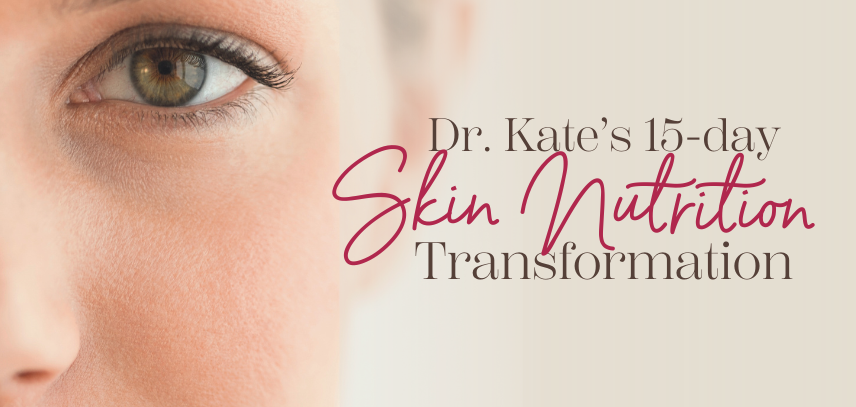
In the last issue of WV magazine, we introduced our valued readers to the key facts about phytoestrogens. With chemical structures similar to human estrogen, the effects of phytoestrogen consumption have been questioned. As promised, we will further explore how phytoestrogens differ from other types of estrogens, and how these plant compounds benefit health throughout life.
Endogenous estrogens, synthetic xenoestrogens, and phytoestrogens: what’s the difference?
Our bodies are exposed to different types of estrogen. Estrone, estriol, and the most biologically active estradiol are the main endogenous estrogens produced in the body and have essential functions in reproductive, heart, bone, and brain health.
Alternatively, synthetic xenoestrogens are chemically manufactured compounds found in pesticides, metals, and additives in food and personal care products. Classified as endocrine disruptors, xenoestrogens mimic natural estrogen and can cause changes in male and female reproductive function, altered immune function, and abnormal growth patterns and neurodevelopmental delays in children.
Lastly, phytoestrogens are natural plant-derived dietary compounds found in foods such as organic and non-GMO soy, flax seeds, red clover, legumes, cruciferous vegetables, and nuts, plus supplements. Phytoestrogens can modulate our hormonal system by binding to estrogen receptors, influencing endogenous estrogen levels, and impacting the bioavailability of sex hormones. Like xenoestrogens, phytoestrogens have been described as endocrine disruptors, and many wonder if the known benefits of phytoestrogen consumption outweigh the risks.
Phytoestrogen impact during childhood
Increased soy consumption during infancy and childhood, by way of infant formulas, soy milk, and food such as tofu, has led to increased phytoestrogen intake, particularly isoflavones, in this population. This has raised concerns about whether phytoestrogens can influence reproductive health and puberty in children.
Currently, research has shown no adverse effects of phytoestrogens on infants, including no negative effects on growth, development, or reproduction with the use of soy-based infant formula. The potential role of phytoestrogens on the early onset of puberty has also been examined. A review of eight studies found no association between children fed a soy-based diet and the onset of early puberty in girls and boys. However, researchers suggest that the effects of phytoestrogens on pubertal timing are complex and can depend on many factors, such as the type and amount of phytoestrogens consumed, along with the health and hormonal status of an individual.
Phytoestrogen impact during adulthood
In adulthood, studies have shown that phytoestrogens are associated with relieving menopausal symptoms, along with a lowered risk of osteoporosis, cardiometabolic diseases, and cognitive dysfunction.
Decreased endogenous estrogen production during menopause can trigger symptoms such as hot flashes and night sweats. Current evidence suggests that isoflavones can reduce hot flashes by binding to estrogen receptors and increasing nitric oxide, a compound that dilates blood vessels and helps dissipate cutaneous heat. During menopause, isoflavones may also have beneficial effects on bone health by preventing a decline in bone mineral density, thereby supporting individuals with osteoporosis concerns.
Did you know that estrogen loss in menopause can also increase cardiovascular disease risk and influence brain function? Research shows that phytoestrogens can help. By reducing low-density lipoprotein (LDL) cholesterol, triglycerides, and blood pressure, increasing high-density lipoprotein (HDL) cholesterol, and providing antioxidant effects, phytoestrogens can support heart health. Plus, as neuroprotectors and antioxidants, phytoestrogens provide support for brain health and positively influence cognitive function. A meta-analysis of 10 placebo-controlled, randomized, controlled trials revealed that supplementation with soy isoflavones improved cognitive function and visual memory in postmeno-pausal women.
Our skin changes as we age because of various factors, such as collagen and estrogen loss, stress, and nutrient deficiencies. Skin aging can be delayed with the use of phytoestrogens. Phytoestrogen intake increases hyaluronic acid and collagen production, improves elasticity, and has strong antioxidant and anti-inflammatory effects to improve skin quality. Supplementation with
100 mg of an isoflavone-rich soy extract daily for six months helped significantly increase epithelial thickness, the
number of elastic and collagen fibers, and blood vessels.
Should I include phytoestrogens in my diet?
Phytoestrogens can improve our health, and consuming phytoestrogen-rich food appears to be safe for the general population. While the average daily intake of phytoestrogens in East and Southeast Asia is about 20–50 mg per day, intake in the U.S. is well below this at 0.15–3 mg per day. We can increase our phytoestrogen intake with dietary sources and consider supplements that are non-GMO and provide standardized active ingredients and dosages.
Although women with or at risk of breast cancer were previously advised not to consume phytoestrogens, it is now known that phytoestrogens may offer protection. Individuals with hypothyroidism with iodine deficiency should use phytoestrogens with caution, and the use of high doses of phytoestrogens continues to be investigated.
Hormone imbalances can alter our mood, metabolism, sleep, and reproductive health.
We can begin to overcome such disruptions by following these steps:
- Consume phytoestrogen-rich food (e.g., non-GMO and organic soy, flax seeds, sesame seeds, cruciferous vegetables, garlic) and consider standardized phytoestrogen supplements
- Choose organic and in-season fruit and vegetables when possible
- Buy hormone-free meats and dairy products
- Reduce the use of plastics
- Use chemical-free household cleaners and personal care products
- Supplement with indole-3-carbinol to support estrogen metabolism
- Support liver and gut health
- Manage stress and restore our sleep
Balancing our hormones will lead to improvements in many parts of our lives. Increased energy and focus, better sleep quality, improved mood and metabolism, and greater longevity are a few benefits we will experience when our hormones are balanced. It’s time to care for ourselves and say “yes” to healing our hormones!












